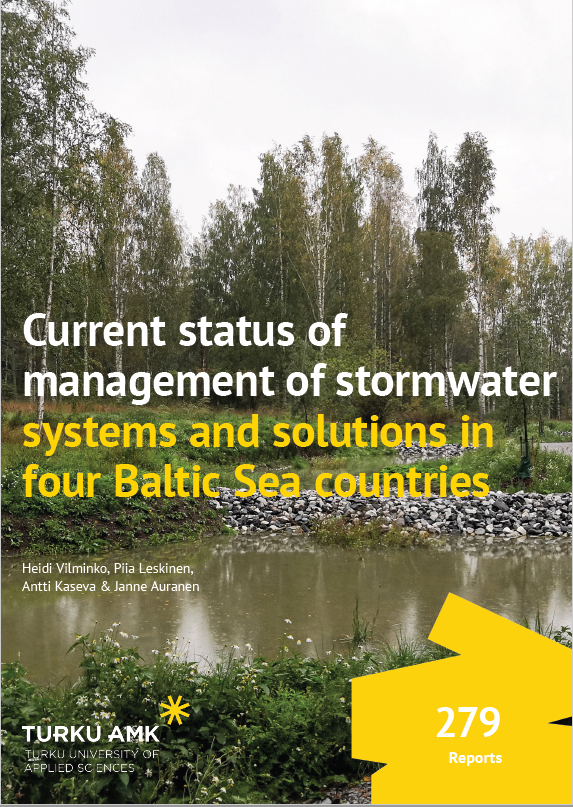Stormwater filtering systems are considered as promising solutions, as they alleviate both stormwater quantity and quality problems. For that reason, many cities are going to invest in different stormwater filtration systems in the coming years. However, these structures can clean pollutants from stormwater only when correctly planned, constructed, and maintained. Many municipalities lack experience and knowledge on the life cycle management and practical realization of stormwater filtering systems; thus, there is a risk that a significant part of the newly constructed systems will not function as expected.
In this report, the status of stormwater filtering structures lifecycle management in Estonia, Finland, Latvia and Sweden was introduced based on a literature review and a questionnaire targeted to municipal officers and consultants.
The literature review revealed significant differences between the ways countries manage stormwater-related issues. In some cases, the methods and best management practices for stormwater management are well established; however, for some, the regulations and guidance for overall stormwater management are still completely lacking. The questionnaire results indicate a need for better communication between the different actors and recognition of the multiple benefits provided by the stormwater filtering structures. The information gained from the literature review and the questionnaire was compiled as check list concerning the common pitfalls as well as best practices in the different phases of a stormwater filtering structure lifecycle.
These lists can be used in the different phases of the life cycle of stormwater filtering structures to guarantee well-functioning high-quality structures. This study was a part of the CleanStormWater project, funded by the Interreg Central Baltic Programme.
See more from:
https://cleanstormwater.viimsivald.ee/articles-from-publications/



